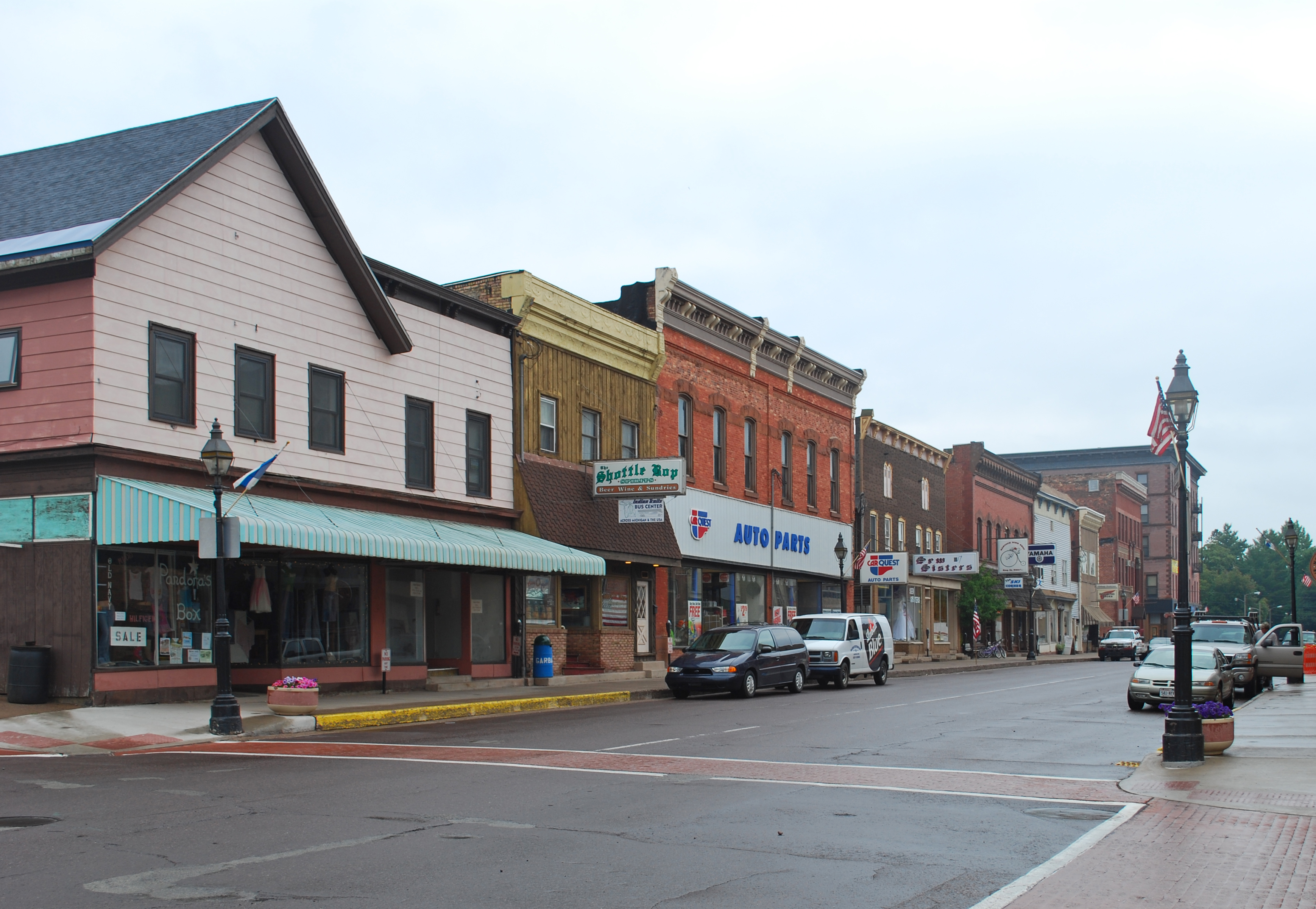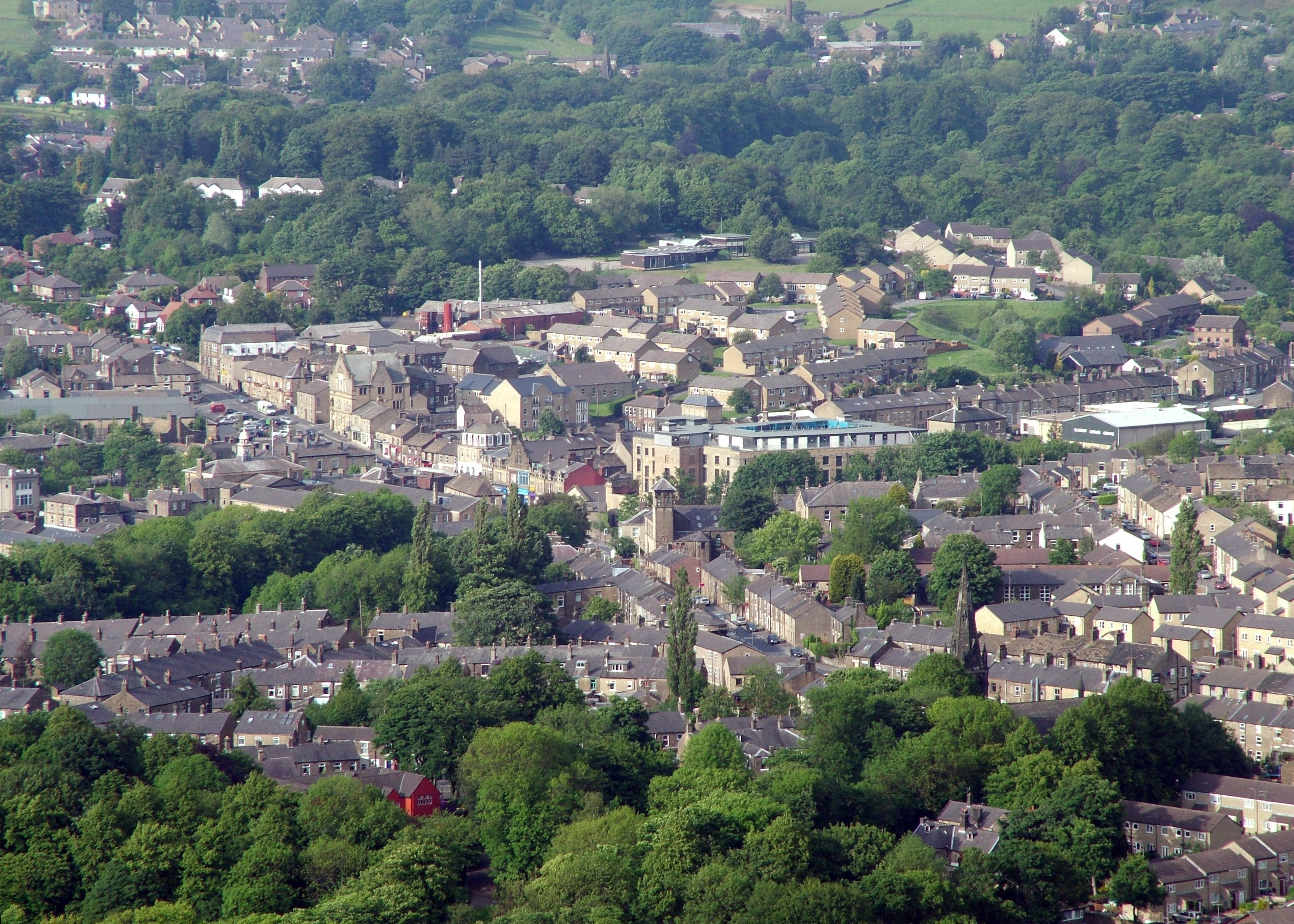|
Newtown, Derbyshire
Newtown is an area of the town of New Mills, in the High Peak (borough), High Peak borough of Derbyshire, England. It is situated to the south-west of New Mills town centre, on the road towards Disley. The area lies beside the county boundary between Cheshire and Derbyshire. History Newtown originally formed part of the parish of Disley and the county of Cheshire; most of it became part of Derbyshire under the Local Government Act 1888. On 31 December 1894, Newtown became a separate civil parish; subsequently, on 1 April 1934, the parish was abolished and merged with New Mills. In 1931, the parish had a population of 1,421. Transport Newtown is served by New Mills Newtown railway station, which is a stop on the Buxton line. There is generally one train per hour in each direction between and , via ; trains run every two hours each way on Sundays. Bus services are operated by Stagecoach Manchester and High Peak Buses. Routes connect the area with New Mills, Glossop, Hayfield, ... [...More Info...] [...Related Items...] OR: [Wikipedia] [Google] [Baidu] |
New Mills
New Mills is a small town in the Borough of High Peak, Derbyshire, England, south-east of Stockport and from Manchester at the confluence of the River Goyt and River Sett, Sett. It is close to the border with Cheshire and above the Torrs, a deep gorge cut through carboniferous sandstone, on the north-western edge of the Peak District National Park. New Mills has a population of approximately 12,000, in a civil parish which includes the villages and Hamlet (place), hamlets of Whitle, Thornsett, Hague Bar, Rowarth, Brookbottom, Gowhole and Birch Vale. New Mills was first noted for coal mining, then for Cotton mill, cotton spinning, Textile bleaching, bleaching and Calico (textile), calico printing. It was served by the Peak Forest Canal, three railway lines and the A6 road (England), A6 trunk road. Redundant mills were bought up in the mid-twentieth century by sweet manufacturer Swizzels Matlow. New Mills was a stronghold of Methodism. New Mills is Twinned cities, twinned wi ... [...More Info...] [...Related Items...] OR: [Wikipedia] [Google] [Baidu] |
Stagecoach Manchester
Stagecoach ManchesterCompanies House extract company no 2818654 Greater Manchester Buses South Limited is a major bus operator in Greater Manchester, operating franchised Bee Network bus services on contract to Transport for Greater Manchester (TfGM). It is the largest UK bus subsidiary of Stagecoach Group outside of Greater London, as well as the largest within the metropolitan county of Greater Manchester by passenger numbers, carrying up to 96.2 million passengers in 2019/20. History GM Buses South In December 1993, GM Buses was split into two companies: ''GM Buses North'' and ''GM Buses South''. It was planned that the two companies would compete against one another but, in practice, they stuck to the sides of Manchester ...[...More Info...] [...Related Items...] OR: [Wikipedia] [Google] [Baidu] |
Towns And Villages Of The Peak District
A town is a type of a human settlement, generally larger than a village but smaller than a city. The criteria for distinguishing a town vary globally, often depending on factors such as population size, economic character, administrative status, or historical significance. In some regions, towns are formally defined by legal charters or government designations, while in others, the term is used informally. Towns typically feature centralized services, infrastructure, and governance, such as municipal authorities, and serve as hubs for commerce, education, and cultural activities within their regions. The concept of a town varies culturally and legally. For example, in the United Kingdom, a town may historically derive its status from a market town designation or City status in the United Kingdom, royal charter, while in the United States, the term is often loosely applied to incorporated municipality, municipalities. In some countries, such as Australia and Canada, distinction ... [...More Info...] [...Related Items...] OR: [Wikipedia] [Google] [Baidu] |
Villages In Derbyshire
A village is a human settlement or community, larger than a hamlet but smaller than a town with a population typically ranging from a few hundred to a few thousand. Although villages are often located in rural areas, the term urban village is also applied to certain urban neighborhoods. Villages are normally permanent, with fixed dwellings; however, transient villages can occur. Further, the dwellings of a village are fairly close to one another, not scattered broadly over the landscape, as a dispersed settlement. In the past, villages were a usual form of community for societies that practice subsistence agriculture and also for some non-agricultural societies. In Great Britain, a hamlet earned the right to be called a village when it built a church.-4; we might wonder whether there's a point at which it's appropriate to talk of the beginnings of French, that is, when it wa ... ''village'', from Latin ''villāticus'', ultimately from Latin ''villa'' (English ''villa''). Ce ... [...More Info...] [...Related Items...] OR: [Wikipedia] [Google] [Baidu] |
Stockport
Stockport is a town in Greater Manchester, England, south-east of Manchester, south-west of Ashton-under-Lyne and north of Macclesfield. The River Goyt, Rivers Goyt and River Tame, Greater Manchester, Tame merge to create the River Mersey here. It is the main settlement of the wider Metropolitan Borough of Stockport. At the 2021–2022 United Kingdom censuses, 2021 census, the built up area as defined by the Office for National Statistics had a population of 117,935, and the metropolitan borough had a population of 294,773. Most of the town is within the boundaries of the Historic counties of England, historic county of Cheshire, with the area north of the Mersey in the historic county of Lancashire. Stockport in the 16th century was a small town entirely on the south bank of the Mersey, known for the cultivation of hemp and manufacture of rope. In the 18th century, it had one of the first mechanised silk factories in the British Isles. Stockport's predominant industries of t ... [...More Info...] [...Related Items...] OR: [Wikipedia] [Google] [Baidu] |
Marple, Greater Manchester
Marple is a town in the Metropolitan Borough of Stockport, Greater Manchester, England. It is on the River Goyt, south-east of Manchester, north of Macclesfield and south-east of Stockport. At the United Kingdom Census 2021, 2021 census, the built up area had a population of 12,970. It lies within the Historic counties of England, historic county boundaries of Cheshire, and became part of Greater Manchester in 1974. The town lies along the Peak Forest Canal, which contains the Marple Lock Flight and Marple Aqueduct. The Roman Lakes, to the south-east of the town centre, attracts anglers and walkers. The town is served by two railway stations: Marple railway station, Marple and Rose Hill Marple railway station, Rose Hill Marple, providing access to the National Rail, rail network in Greater Manchester and beyond. It is also close to the Middlewood Way, a shared use path following the former Macclesfield, Bollington and Marple Railway line south from Rose Hill to Macclesfield. ... [...More Info...] [...Related Items...] OR: [Wikipedia] [Google] [Baidu] |
Macclesfield
Macclesfield () is a market town and civil parish in the unitary authority of Cheshire East, Cheshire, England. It is sited on the River Bollin and the edge of the Cheshire Plain, with Macclesfield Forest to its east; the town lies south of Manchester and east of Chester. Before the Norman Conquest, Macclesfield was held by Edwin, Earl of Mercia and was assessed at £8. The Middle Ages, medieval town grew up on the hilltop around what is now St Michael's Church, Macclesfield, St Michael's Church. It was granted a municipal charter in 1261. King's School, Macclesfield, Macclesfield Grammar School was founded in 1502. The town had a silk-button industry from at least the middle of the 17th century and became a major Silk industry of Cheshire#Macclesfield, silk-manufacturing centre from the mid-18th century. The Macclesfield Canal was constructed in 1826–31. Hovis, Hovis breadmakers were another Victorian era, Victorian employer; modern industries include pharmaceutical indus ... [...More Info...] [...Related Items...] OR: [Wikipedia] [Google] [Baidu] |
Hayfield, Derbyshire
Hayfield () is a village and civil parish in High Peak, Derbyshire, High Peak, Derbyshire, England, with a population of around 2,700. The village is east of New Mills, south of Glossop and north of Buxton, in the basin of the River Sett. The civil parish includes Hayfield village itself, the hamlets of Little Hayfield and part of Birch Vale, and a significant proportion of the Kinder Scout plateau. Location and geography The village is in the valley of the River Sett between the towns of Glossop, New Mills and Chapel-en-le-Frith. Anecdotally it is often described as being "at the foot of Kinder Scout". Thirty of the 33 km2 of the parish are within the boundaries of the Peak District National Park, including the hamlet of Little Hayfield. However, the village centre itself is not within the national park. The entire area is within the more loosely defined geographical area referred to as the Peak District. The village is split into roughly two halves, intersected by t ... [...More Info...] [...Related Items...] OR: [Wikipedia] [Google] [Baidu] |
Glossop
Glossop is a market town in the borough of High Peak (borough), High Peak, Derbyshire, England, east of Manchester, north-west of Sheffield and north of Matlock, Derbyshire, Matlock. Near Derbyshire's borders with Cheshire, Greater Manchester, South Yorkshire and West Yorkshire, between above sea level, it is bounded by the Peak District National Park to the south, east and north. In 2021, it had a population of 17,825. Historically, the name ''Glossop'' refers to the small hamlet that gave its name to an ancient parish recorded in the Domesday Book of 1086 and then the manorialism, manor given by William I of England to William Peverel. A municipal borough was created in 1866, which encompassed less than half of the manor's territory.The Ancient Parish of Glossop Retrieved 18 June 2008 The area now known as ... [...More Info...] [...Related Items...] OR: [Wikipedia] [Google] [Baidu] |
High Peak Buses
High Peak Buses Limited is a bus company based in Dove Holes, Derbyshire, formed in 2012. It operates a mixture of local and long-distance commercial and subsidised public bus services in and around the Borough of High Peak, after which it is named. History In April 2012, Centrebus and Wellglade Group entered a 50/50 joint venture. This saw Bowers Coaches and Trentbarton's Buxton operations combined based at the latter's Dove Holes depot.Wellglade/Centrebus join up in Buxton ''busandcoach.com'' 24 May 2011 Services High Peak operates all services previously run by and the Buxton depot of Trentbarton, inc ...[...More Info...] [...Related Items...] OR: [Wikipedia] [Google] [Baidu] |
Borough Of High Peak
High Peak is a local government district with borough status in Derbyshire, England, covering a high moorland plateau in the Dark Peak area of the Peak District National Park. The district stretches from Holme Moss in the north to Sterndale Moor in the south, and from Hague Bar in the west to Bamford in the east. The population of the borough taken at the 2011 Census was 90,892. The borough is unusual in having two administrative centres for its council, High Peak Borough Council; the offices are in Buxton and Glossop. Other towns include Chapel-en-le-Frith, Hadfield, New Mills and Whaley Bridge. High Peak was the name of a hundred of the ancient county of Derbyshire covering roughly the same area as the current district. It may have derived its name from the ancient Forest of High Peak, a royal hunting reserve administered by William Peverel, a favourite of William I, who was based at Peak Castle. High Peak contains much of the Peak District National Park. The district ... [...More Info...] [...Related Items...] OR: [Wikipedia] [Google] [Baidu] |







